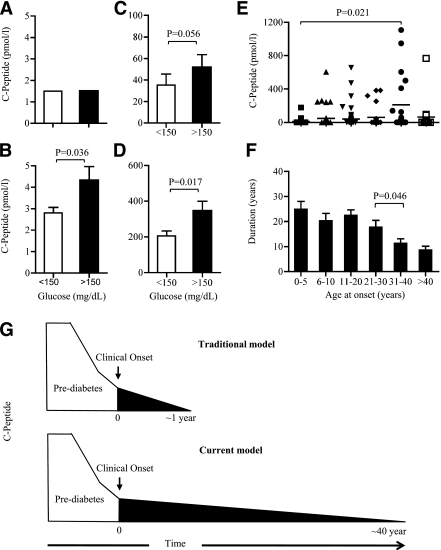Figure 3.
Investigating functionality of insulin-secreting β-cells based on blood glucose (A–D) or age at onset and lifetime duration of the C-peptide response (E and F) defines the time line of persistent C-peptide section (G). Hyperglycemic (n = 52) or normoglycemic (n = 52) samples were examined in the same subjects (n = 52), who gave samples on consecutive weeks and stratified into four ranges of C-peptide levels: 0–5 pmol/L (nonresponsive), 0–5 pmol/L (responsive), 5–100 pmol/L, and >100 pmol/L (A–D). Significantly higher C-peptide levels were produced in hyperglycemic samples, except around the lower levels of assay detection (range 0–5 pmol/L), where β-cells from some samples did not respond to hyperglycemia. Subjects divided into six groups based on age at onset produced varying levels of C-peptide, with the highest levels produced at ages 31–40 years and a sudden drop in the group >40 years old and studied for remaining C-peptide secretion (E and F). C-peptide production during and after type 1 diabetes diagnosis. Reduction of C-peptide levels starts sometime during the prediabetes stage and keeps going down with the progress of the disease. With the new ultrasensitive C-peptide assays, remaining β-cell function extends for years after loss of pancreas function and in some cases extends to 40 years after diagnosis (G).

